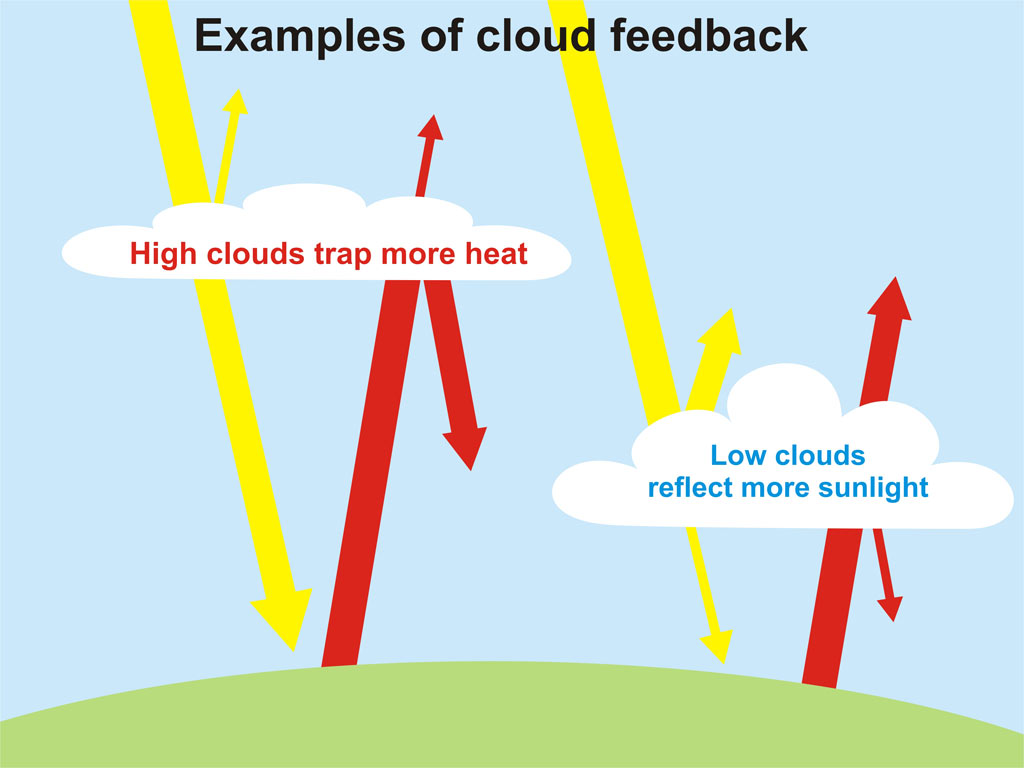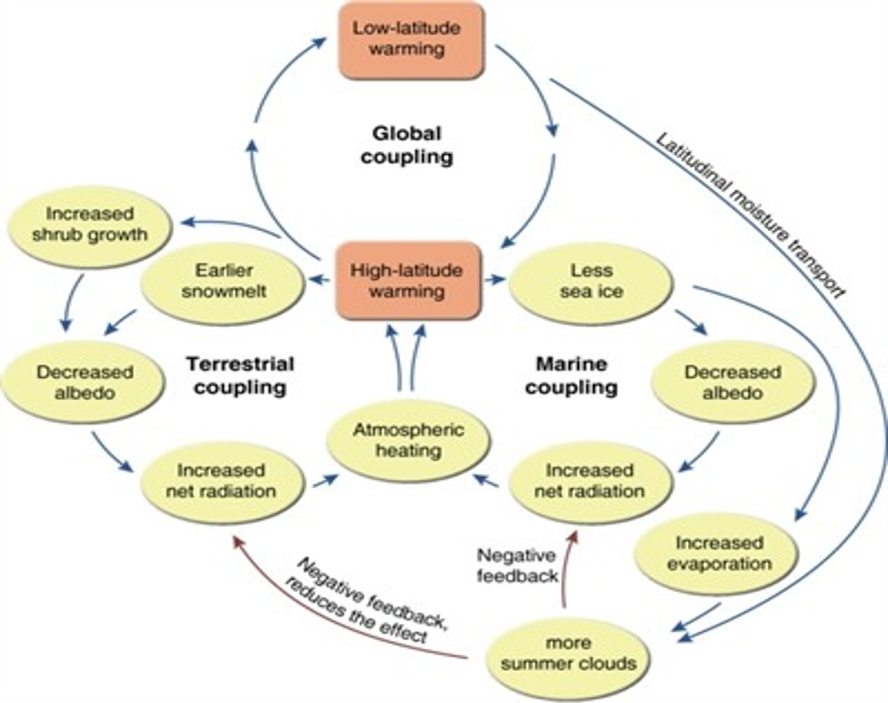Climate Feedbacks
Feedback into the climate system occurs when one part of the system is altered in either a positive or negative manner than then amplifies or decreases the overall effect. Most all of the feedback mechanisms discussed below will operative in the positive direction meaning that global warming is amplified .
For now we will start off with the issue of clouds as in this case, the feedback could be either positive or negative. Basically, if climate change produces more high cirrus clouds that are made of Ices, then this is positive feedback as such clouds will prevent outgoing long wavelength radiation (OLR) from leaving the system ; hence warming.
However, if more low clouds made primarily of water vapor or produced, then the net effect is that such clouds let through less sunlight so less sunlight (solar radiation) heats the Earth's surface. In essence, the reflectivity of the atmosphere increases with the addition of such clouds and this would lead to global cooling.

Note that while increasing water vapor content in the atmosphere can lead to more water vapor clouds, much water vapor can exist in non-cloud form. A cloud is condensation of water vapor in such tiny droplets that they float, suspended, in the atmosphere. Yes, clouds are liquid water. Water vapor is invisible. So the more water vapor that is in the atmosphere, the more heat that can be absorbed, in addition to the heat absorbed by the CO2. This is known was the water vapor feedback loop.


Currently there is no data to support the idea that the Earth is getting cloudier. Indeed, measurements taken over the time period 1983-2010 show a very slight decrease in fractional cloud cover.

A full consideration of various feedback mechanisms in the climate system is very complicated and understood by no one. This feedback system is illustrated below but from these many arrows and terms, we will distill a simpler version of this, which properly conveys the physical impact.

The existence of some of the many potential feedback mechanisms is highly disputed in the climate science community, but a few are readily acknowledged as being important. Indeed, the existence of just one positive feedback loop is bad.
An example of a well understood feedback loop is provided by the snow and ice cover of the Northern Hemisphere, and, in particular, the rapid melting of the Arctic Sea Ice Cap. The feedback loop is basically
- Human induced warming causes lose of snow and ice in the Northern Hemisphere (NH)
- The loss of these reflective cover increases the amount of surface warming in the NH which in turn makes it harder to snow and ice to accumulate
- The net effect is a runaway effect where once the ice, and particular, the Arctic Sea Ice, vanishes too much during a melt season, it can not recover to its former size.
The steps above can be visualized in simple form as follows:

More complicated versions of feedback in the Arctic are provided below:



In addtion, there are more sources of positive feedback in the Arctic environment, the most notable is that of methane (which we will discuss in more detail later in the methane section). It is these potential sources of feedback in the Arctic that worry some (including me) that we are on a course for runaway global warming.

Finally, there are other forms of positive feedback that involve ocean processes or changes in vegetation. These are illustrated here:

The bottom line is that full consideration of potential feedbacks greatly increases the amplitude of global warming in the future. In general terms:
- We are already at +1C and perhaps +1.5C considering the most recent data
- Holding increases to less than 2C is highly desireable to minimize the overall global effects (we are not on this trajectory.
- Anything over +4 C is similar to Ice Age effects and will have significant consequences for everyone.
Yet we all ignore this because its "fake news".

|















